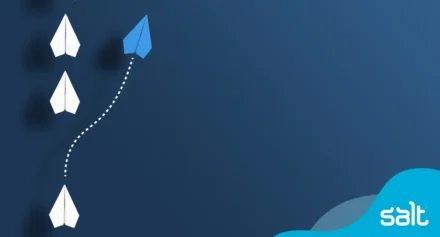Steps to more inclusive hiring
Inclusive hiring is crucial - but it can be hard to know where to start. There are lots of practical steps you can take to counter bias.

Build a more effective team and a more inclusive workplace with steps to create a stronger workplace and avoid hiring bias during the recruitment process.
Salt is committed to diversity and inclusion. Our expert consultants can help you build a team that delivers results now and in the future. We can help you find the right talent for your needs.
Why inclusive recruitment is important
Hiring Bias can perpetuate many challenges in the workplace. This includes pay gaps, unequal career progression and a lack of representation at managerial and leadership levels. It’s important to hire a diverse group of people and reduce bias. Studies show that companies that’ve incorporated diversity programs as business strategies benefit from:
- Better decision-making
- Executing actions at least 2 times faster
- Higher EBIT (earnings before investment and taxation).
Robin J. Ely and David Thomas want workplaces to use a ‘learning-and-effectiveness model’ to handle and benefit from diversity. They believe you can’t outsource equality, diversity and inclusion to your HR team, or your new hires. Internal work practices and environment need to be inclusive to see any benefit from inclusive hiring. [Source].
They advocate 4 strategies to help build a diverse workplace:
- Build trust where everyone can feel safe expressing themselves
- Actively work against discrimination and subordination
- Embrace a wide range of styles and voices
- Make cultural differences a resource for learning
Eliminating hiring bias
Demand a diverse pool of candidates
Whether you’re recruiting internally or with recruiters like Salt, make it clear that you expect a diverse pool of candidates. This means more than just one female or minority candidate. Research shows that the odds of hiring a woman are 79 times as great if at least two women are in the finalist pool. The odds of hiring a nonwhite candidate are 194 times as great with at least two finalist minority applicants.
Establish objective criteria ahead of time
Making a decision based on who’s “a good culture fit” or “the right fit for the team” is very susceptible to implicit bias. That ‘fit’ could be more to do with the candidate having a similar background or interests (homophily — an affinity to similar others).
In addition to this, candidates in out-groups are often subjected to more scrutiny. One example would be a working mother having her commitment called into question in a way that a working father wouldn’t.
Often, out-group candidates need to code-switch and adjust the way they speak or behave to come across favourably. This is an unfair disadvantage if they display the same mannerisms as their elite counterparts and are received unfavourably due to stereotyping; for example, a ‘passionate’ white man compared to an ‘angry’ Black woman. Code-switching takes an emotional toll and reinforces to the individual that they don’t belong and they can’t be themselves.
Diversify your decision-makers
A matrix isn’t sufficient unless it holds you accountable. Even well-meaning and experienced allies cannot fully understand or empathise with another identity and will be susceptible to implicit biases they aren’t aware of.
Include different team members in your interview process and be open to hearing their feedback, even if it’s different from your own. Challenge yourself to listen to alternate views and assessments.
Diversifying the decision-making process also means inviting your team or members of other teams to hold you accountable for your goal to be inclusive in hiring. They can serve as a bias interrupter as well.
Avoid only referral hiring
Our networks often reflect our implicit biases. You’re more likely to connect to someone like yourself, so hiring through your own or your employees’ social networks can perpetuate homogeneity within an organisation. Every individual you hire should be objectively reviewed according to the matrix of skills you are hiring for.
Structure interviews with skills-based questions
One way of preventing too heavy a focus on qualifications, education or work experience, which, while important, are also not equally accessible to all, is including competency-based questions that allow candidates to show their thinking and approach. The STAR technique is a well-known method for answering these questions,
Skills assessments — such as a practical task with a specific tool or a theoretical situation that tests a candidate’s approach — are less susceptible to bias and allow you to start to quantify candidates’ skillsets to find the right talent for your task and team.
Salt is committed to diversity and inclusion. Our expert consultants can help you build a team that delivers results now and in the future. We can help you find the right talent for your needs.


